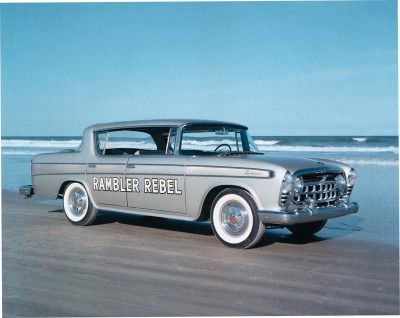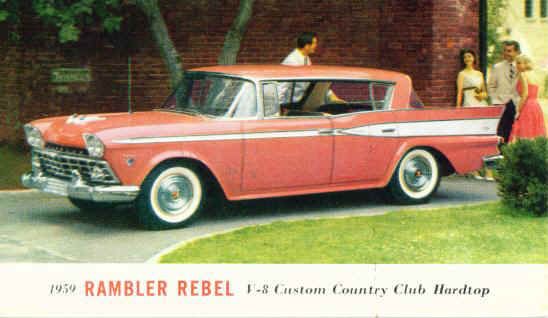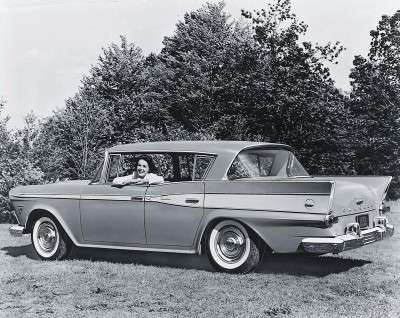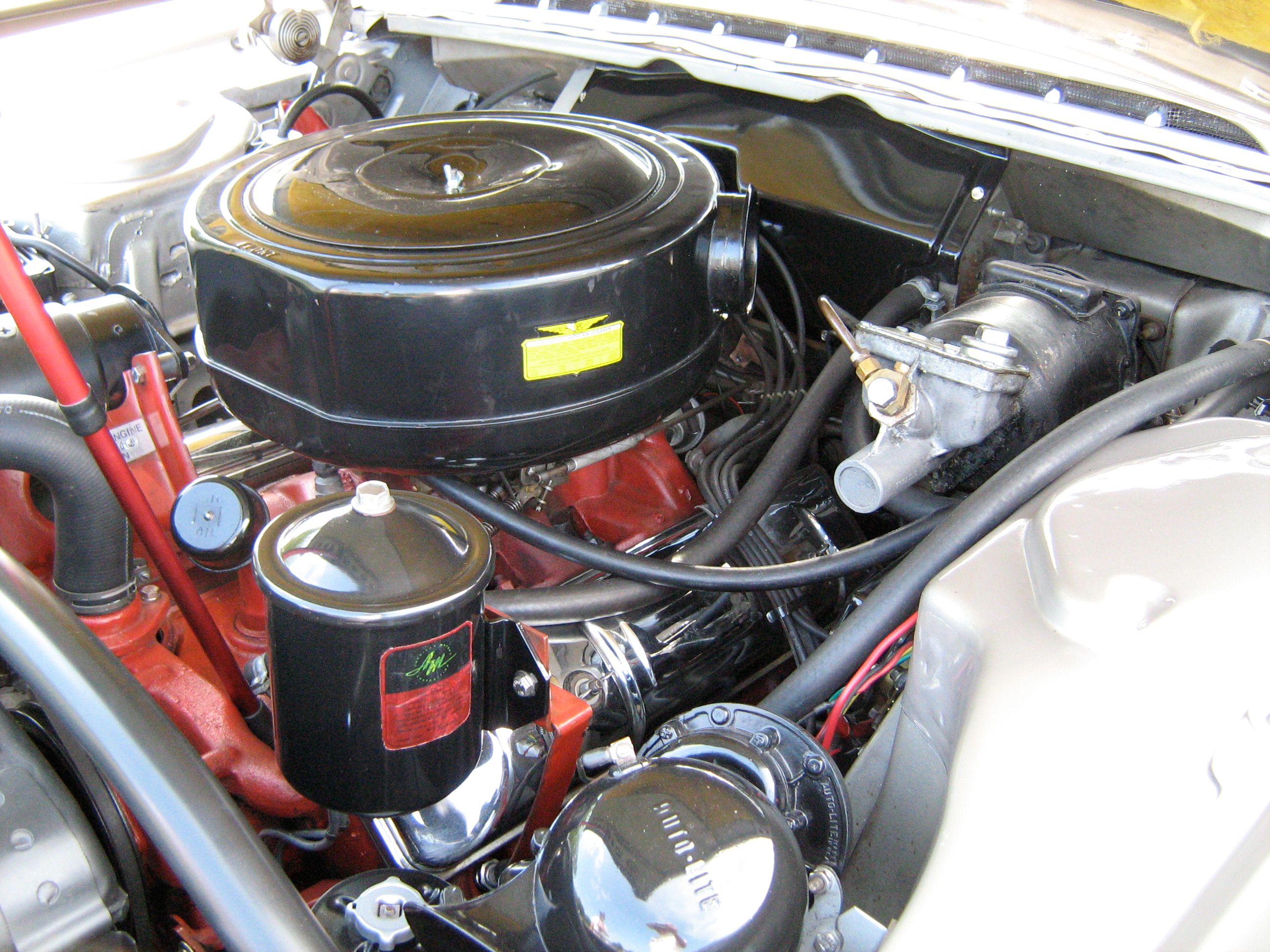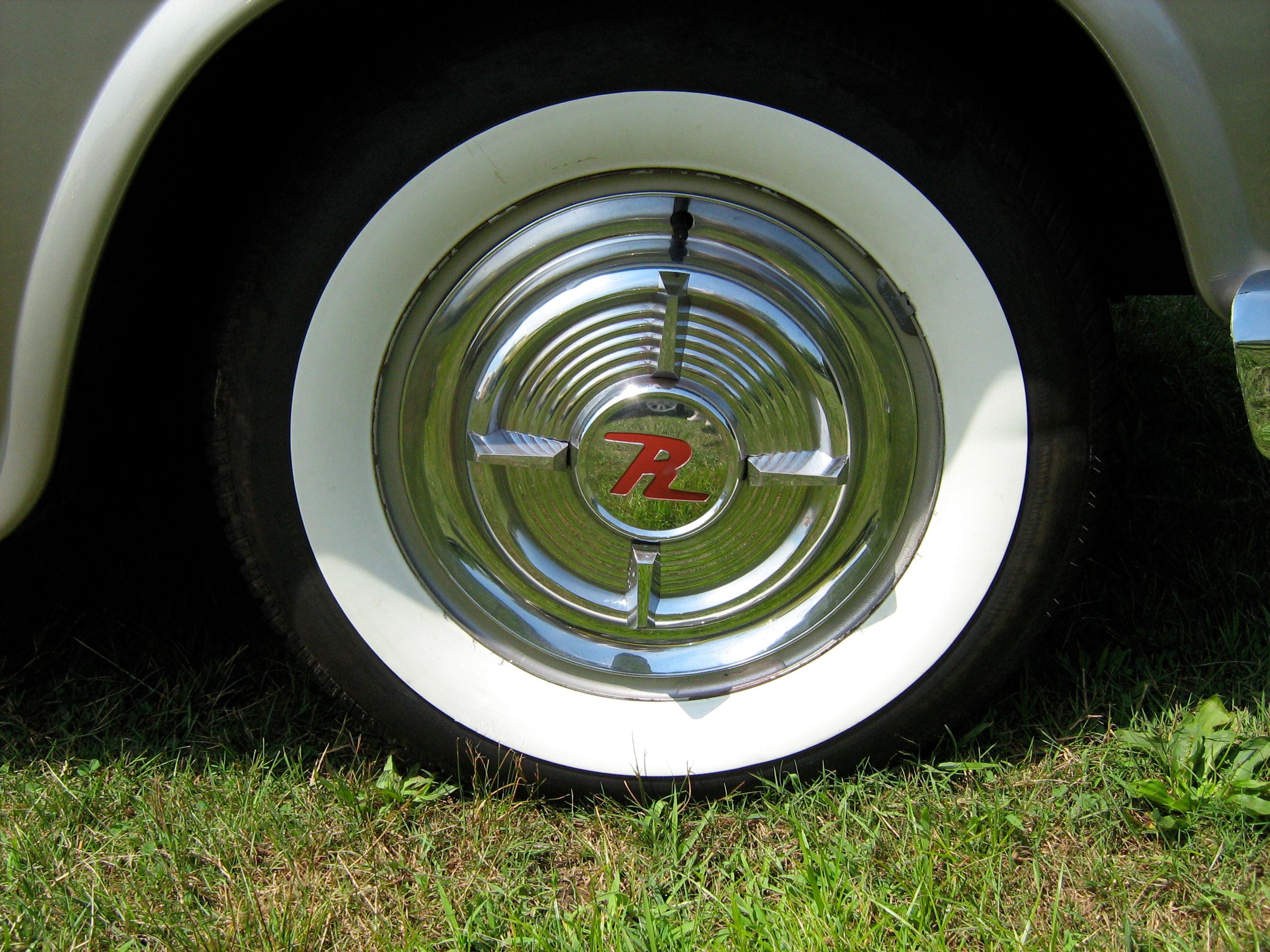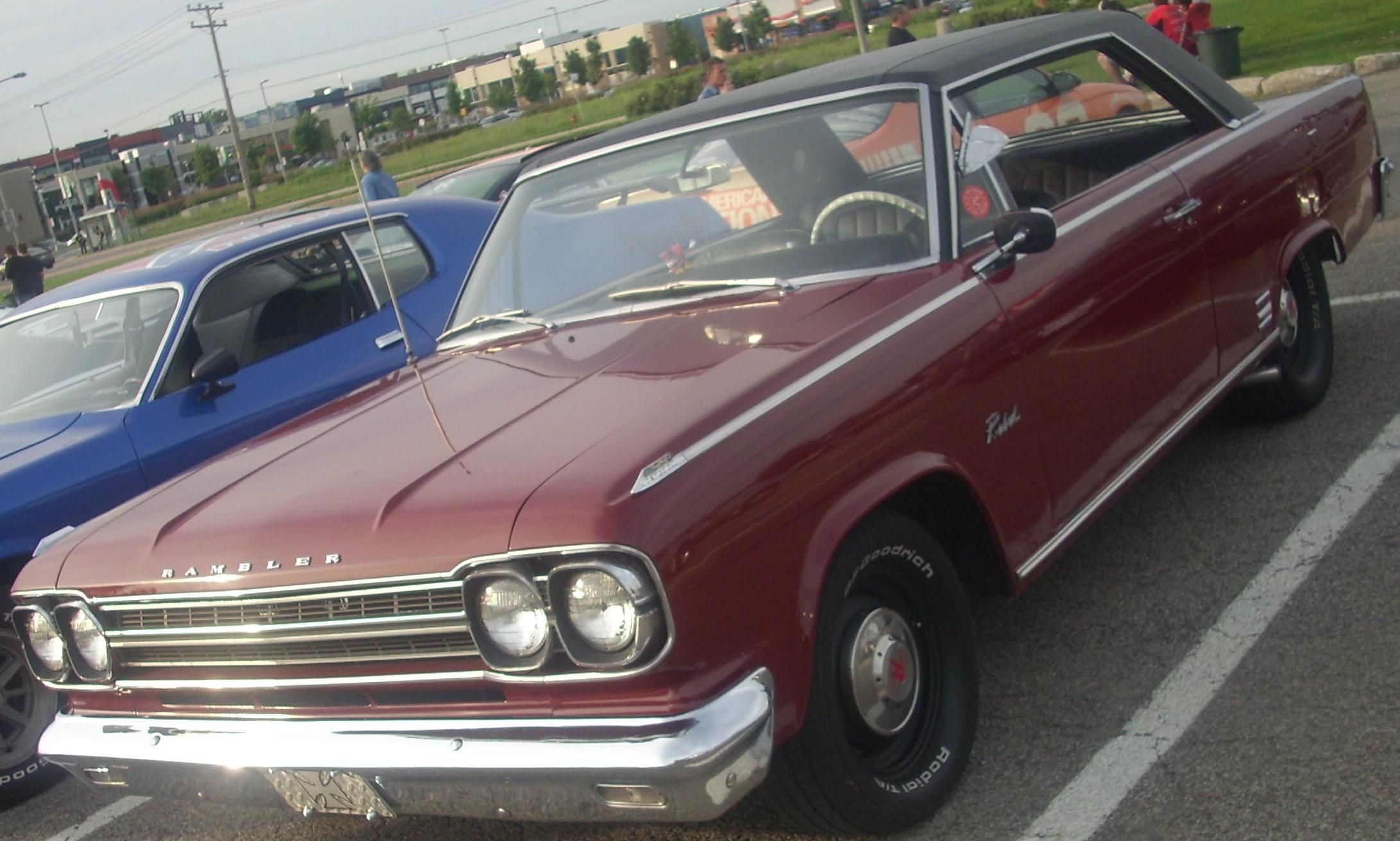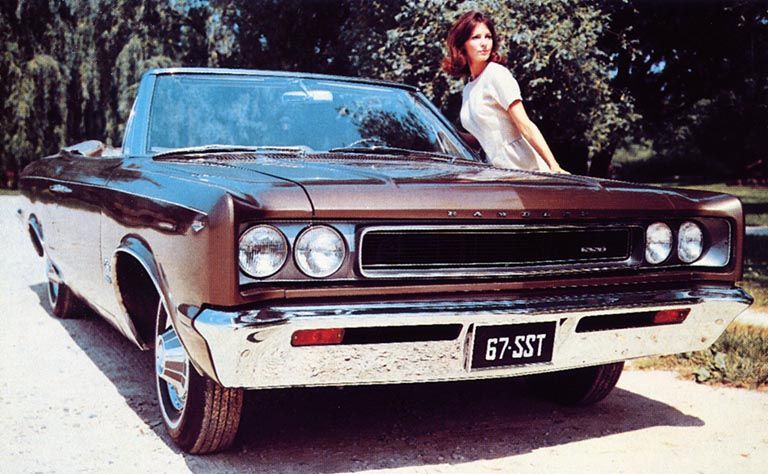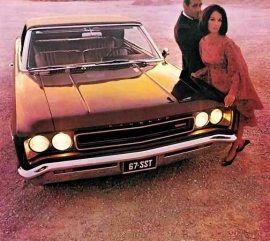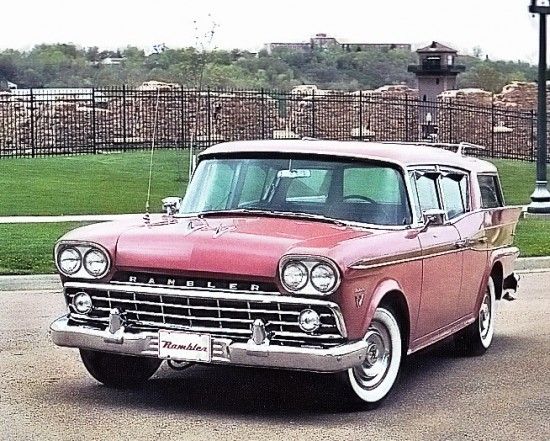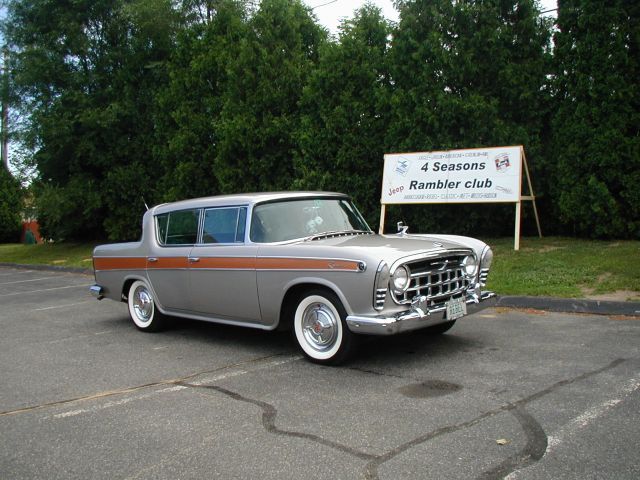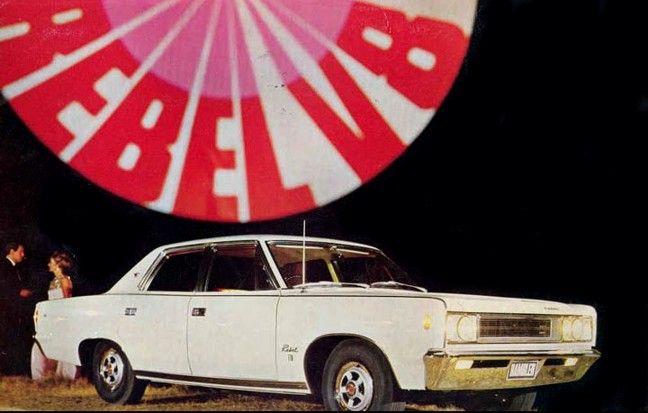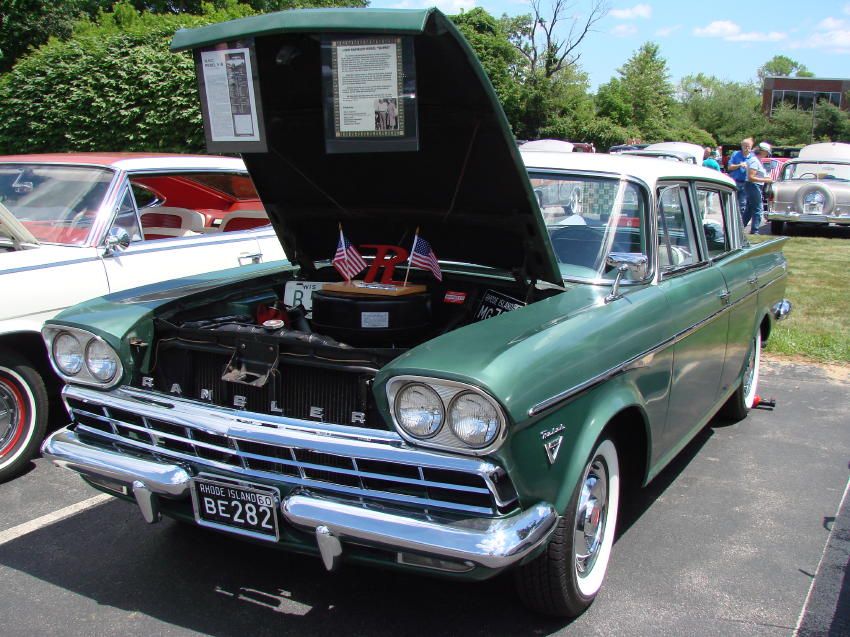George Romney, the then-new chairman of American Motors Corporation, had big plans for the small American Company when he took over in 1954. World War II was over and the 1950s were in full swing. Not only were sales up for the big three automakers in the United States, but Hudson and Nash were doing well also. Romney’s big idea was to have Rambler become a company on its own and expand into a sector that Ford->ke31, General Motors->ke1024, and Chevrolet->ke199 had ignored thus far. Most companies were offering only large sedans and small economy cars. Rambler was going to split the market wide open with a mid-size model that featured aggressive styling and plenty of power.
Little did Romney know that his new Rambler Rebel model was destined to become the grandfather of the muscle car era. The first thing that Rambler needed to do was find a suitable engine that would bring performance and excitement to a lineup that had never had it before. Clearly, offering a V8 was the answer, and the new AMC 5.4-liter was perfect.
As history shows, 1957 was destined to be the first and most important year for the Rambler Rebel. As time went on and the car's name was adapted to newer models from AMC, the original feeling of the car was lost. It is something that happens with many companies when they use a classic marquee in the wrong way simply to boost sales in the short term. Nonetheless, the short and successful years of the Rebel production have spawned numerous car clubs and followers throughout the United States and remains popular today.
Hit the jump for more details on the Rambler Rebel
rambler-rebel-history
- Make: Array
- Model: rambler-rebel-history
1957 - 1970 Rambler Rebel History
- Make: Array
- Model: 1957 - 1970 Rambler Rebel History
- Engine/Motor: V8
- Horsepower: 255
- [do not use] Vehicle Model: Array
The First Year: 1957
AMC was able to push the development of the new Rebel up by nearly one year and surprise the automotive world with its introduction in December of 1956. It may have looked like a standard 1950s sedan with some fancy trim pieces, but this was the supercar of the day. The lightweight frame was 108-inches long and a big four door body rode on top of it. The cars biggest achievement was the 5.4-liter V8 engine sitting under the hood. It marked the first time that a mid-size car featured this large displacement engine type since World War II. The other major manufacturers had yet to even venture back into the midsize market, yet alone make a performance version.
The Rebel was even made available for $2,786 which was an economical figure for the fastest production American Car. The performance provided by the big V8 was rather astonishing for the era, the Rebel could get to 60mph in 7.5 seconds. The carbureted engine was capable of making 255hp which weighed out to roughly 13 pounds per horsepower. Rambler may have borrowed the basics for this engine from the larger Hudson Hornet models, but it featured mechanical valve lifters and a higher compression ratio. Both engines ended up being rated by the factory at the same 255hp, but that just means that the Rebel was underrated.
An innovative option for the Rebel was advertised for only $395. The bendix “Electrojector” fuel injection system helped the same V8 reach 288hp. This became the first engine to use this type of system and according to Motor Trend magazine, it was capable of beating the 1957 Chevrolet Corvette->ke1280 from a standstill. Problems with production and distribution ended up delaying and eventually ending this option. No cars were ever sold to the public with this option and only several may have been produced. Either way, the combination of high-end exterior trim and a big American V8 under the hood gave way for the Rambler to make it into the hearts and minds of the American Public and the horsepower wars had begun.
Second Generation: 1958 – 1959
The original Rebel was a special model for the company in 1957, but with its newfound success in 1957, AMC decided to expand the label to all Ramblers in 1958. The new lineup included six different models: the base Deluxe four-door sedan, Super or Custom trim four-door sedan, station wagon, and a four-door Custom trim top of the line model that had a pillarless silhouette. New styling pieces included a new grille, front and rear fenders, quad headlights, and large tailfins.
The public may have been okay with all of those changes, but the car fundamentally differed from the original with the use of the 4.1-liter V8 for 1958. This model was rated at 215hp and 260 lb-ft of torque. That weak figure was only enough to get the car up to 60mph in 12.0 seconds, making it less of a muscle car than ever before. The 327 engine was still available, however only on the Rambler Ambassador model that was slated towards the higher end market.
1959 – More changes were made for the 1959 models, helping to increase performance and aesthetics. The new hood featured no ornament, a full width grill gave the car a more purposeful demeanor, and new bumper guards shortened the length by 1.6 inches. Many other body lines were smoothed down and simplified and the angle of the windshield reduced to help make the car more aerodynamic. Perhaps the most important change was a set of bigger drum brakes and a lower axle ratio that made the car easier to drive and allowed it to perform more economically.
Third Generation: 1960
The third generation Rambler Rebels were actually not that at all. AMC decided to start pulling away from the Rambler name and simply denoted the individual models all as Ramblers. Depending upon which trim you chose either an “Economy V6” or “Rambler V8” engine was available. The base model featured a two barrel engine that only made 260hp, making this year one of the least impressive for Rambler. Rambler was clearly a little confused about where to take the line, because 1960 saw the introduction of new models including two new station wagons. Just as the model line grew, Rambler decided to use the name “Classic” for 1961 and retired the Rebel name for the next several years.
Fourth Generation: 1966
By the fourth generation Rambler felt it was time to introduce the newest model of the Rebel as a revised two-door hardtop. This was a completely new look for the car and featured all new bodywork. A special interior for this model was introduced and it included bucket seats and a tachometer mounted on the dash, which was a rare option for that time period. The sporting character of the new model was also carried over into the engine bay with the 327 cubic inch V8 making 270hp. The year 1966 saw the muscle car wars start and Rambler was making its final push towards being a viable option. The biggest problem with this new model was its out-of-date torque tube suspension. Even though it may not have been able to compete with new cars coming from Ford and Chevrolet, it was the last real performance oriented Ramble Rebel.
Fifth and Final Generation: 1967-1970
Essentially, Rambler gave up on trying to make an impact on the muscle car market and developed a bloated sedan with the Rebel badged slapped on the back. The 114 inch wheelbase of the new car gave passengers more room and increased cargo space. A “coke bottle” shape and sweeping body lines made the car fit in with nearly every other American land yacht on the road and the Rebel rode off into the distance without putting up a final fight. The final shining moment may have been the optional 5.6-liter V8 that was at least able to get the big car moving at a good clip. Further models would simply be denoted as the AMC Rebel and then ultimately dropped in 1971 with the introduction of the AMC Matador.
Competition
The Rambler Rebel started out as just that, a Rebel on the American automotive scene. Its early introduction of a V8 in a mid-size car gave the company a leg up on the major manufacturers, but ultimately that lead was squandered. Major competitors included Chevrolet and its Bel-Air models, along with offerings from Ford, Chrysler, and Plymouth. As the Rebel aged and became more than just a single model in the lineup, the competition undoubtedly expanded. It was no longer fighting in the performance category, but rather against other large sedans that the major manufacturers were just plain better at creating and marketing.


